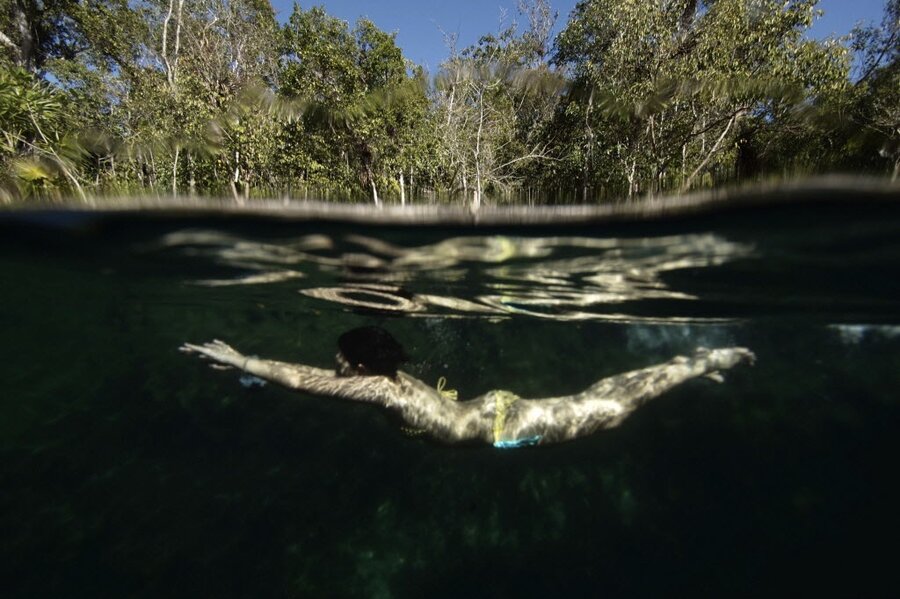US and Cuba agree on saving sharks, coral reefs, and other marine life
Loading...
Washington and Havana made a promise to mend ties over a year ago. It’s now starting to bear fruit in a pact to protect the marine environment.
A month ago, the United States and Cuba took steps to initiate an environmental partnership to protect the endangered shark population in the Gulf of Mexico. It was the first tangible step after President Obama and Cuban President Raul Castro shook hands and opened the door to a new era in US-Cuba relations.
But already, the shark project has been expanded to a much more inclusive and ambitious project to protect underpopulated and rare species of fish and coral in the area. US and Cuban officials officially signed a memorandum on Wednesday.
“We recognize we all share the same ocean and face the same challenges of understanding, managing and conserving critical marine resources for future generations,” Kathryn Sullivan, chief of the US National Oceanic and Atmospheric Administration told The Associated Press.
The memorandum was directed towards two protected natural and delicate reserves that lie within the 90 mile stretch of the Gulf of Mexico that separates the US and Cuba: Guanahacabibes National Park and the Banco de San Antonio.
Scientists in both countries will be working together to conserve some of the most precious and delicate marine life; the species includes a large population of sea turtles, spiny lobsters, and one of Cuba’s most pristine coral reefs. Scientists with the National Oceanic and Atmospheric Administration say that the livelihood of the reef can have substantial ripple effects on other coral habitats in the Gulf of Mexico and South Florida.
The threat of tourism is still a major concern for scientists in an area that receives more than 3 million visitors each year. Although the reefs are in an isolated area, increasing tourist populations brings in more boats and water traffic.
In Cuba, the risk of overfishing is already threatening many species of reef fish, sharks, dolphins and manatees. According to the Environmental Defense Fund, “Fishing is vital to [Cuba’s] economy, but the majority of its commercially valuable fish stocks are already in critical condition.”
In addition to the signed memorandum, Cuba will focus on sustainable fishing and saving its migratory shark population, which is quickly dwindling.
The environment has always been one of the least contentious issues between Havana and Washington, who almost fought a full-blown war in 1961 during the Bay of Pigs invasion.
But relations between the US and Cuba have been warming in recent months as trade regulations have loosened. US companies are now allowed to open offices in Cuba – including mail and package services, telecommunications, and news organizations. Last December, the Cuban government released Alan Gross, an American contractor who was imprisoned in Cuba for five years. In return, the US released three Cubans jailed for 15 years.
The two nations have yet to announce what might follow after the ocean conservation plan is underway, but this could lay the groundwork for further cooperation.








